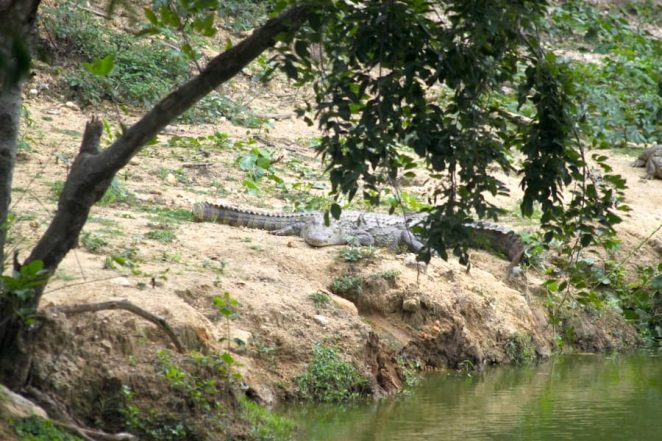The watersnake, belonging to the genus Nerodia, is a fascinating group of non-venomous snakes that are primarily found in North America. These reptiles are often mistaken for their venomous counterparts, such as the cottonmouth or water moccasin, due to their similar habitats and appearances. Watersnakes are adept swimmers, spending much of their time in or near freshwater bodies like rivers, lakes, and marshes.
Their presence in these ecosystems plays a crucial role in maintaining the balance of aquatic life, as they are both predators and prey within their environments. Watersnakes exhibit a remarkable adaptability to various aquatic habitats, which has allowed them to thrive across a wide range of geographical areas. They are often seen basking on rocks or logs near the water’s edge, where they can absorb sunlight and regulate their body temperature.
The watersnake’s ability to camouflage itself among the reeds and grasses makes it an effective ambush predator. Understanding the biology and ecology of watersnakes is essential for appreciating their role in the ecosystem and for fostering a harmonious relationship between humans and these intriguing reptiles.
Key Takeaways
- The watersnake is a non-venomous, aquatic reptile commonly found in North America.
- Watersnakes can be identified by their slender bodies, keeled scales, and distinct patterns, and they can grow up to 4 feet in length.
- They inhabit a variety of aquatic environments, including lakes, rivers, and wetlands, and are found throughout the eastern United States and parts of Canada.
- Watersnakes primarily feed on fish, amphibians, and small mammals, and they use stealth and ambush tactics to catch their prey.
- Female watersnakes give birth to live young, and the species is often misunderstood and mistaken for venomous snakes, leading to unnecessary fear and persecution.
Identification and Physical Characteristics
Watersnakes are characterized by their robust bodies and distinctive coloration, which can vary significantly among species. The most common species include the Northern Watersnake (Nerodia sipedon), the Southern Watersnake (Nerodia fasciata), and the Plain-Bellied Watersnake (Nerodia erythrogaster). Northern Watersnakes typically exhibit a pattern of dark bands or blotches on a lighter background, which can range from brown to gray.
In contrast, Southern Watersnakes often display a more vibrant coloration with reddish or orange hues, making them particularly striking. In terms of size, watersnakes can grow to be quite large, with some individuals reaching lengths of up to 5 feet. Their heads are relatively broad compared to their necks, and they possess large, round eyes that provide excellent vision both above and below the water’s surface.
The scales of watersnakes are smooth and shiny, aiding in their streamlined movement through water. Additionally, their tails are flattened laterally, which enhances their swimming ability. This combination of physical traits not only aids in identification but also highlights their adaptation to an aquatic lifestyle.
Habitat and Range

Watersnakes inhabit a variety of freshwater environments, including lakes, rivers, ponds, marshes, and swamps. They prefer areas with abundant vegetation, as this provides both cover from predators and hunting grounds for their prey. The presence of submerged logs and rocks is also crucial for their basking behavior.
While they are primarily found in freshwater habitats, some species can tolerate brackish water conditions, allowing them to inhabit estuaries and coastal regions. Geographically, watersnakes are distributed across much of North America. The Northern Watersnake is commonly found in the eastern United States and parts of Canada, while the Southern Watersnake ranges from the southeastern United States to parts of Texas.
The Plain-Bellied Watersnake is typically found in the central United States. This wide distribution reflects their adaptability to various environmental conditions, although specific habitat preferences can vary among species. Understanding their habitat requirements is vital for conservation efforts and for mitigating human-wildlife conflicts.
Diet and Predatory Behavior
| Species | Diet | Predatory Behavior |
|---|---|---|
| Lion | Carnivorous | Hunting in groups, stalking, and ambushing prey |
| Great White Shark | Carnivorous | Ambushing and attacking from below |
| Brown Bear | Omnivorous | Opportunistic hunting and scavenging |
Watersnakes are opportunistic feeders with a diet primarily consisting of fish, amphibians, and small invertebrates. Their hunting strategy often involves ambushing prey from a concealed position among aquatic vegetation or submerged structures. They rely on their keen eyesight and sensitivity to vibrations in the water to detect potential meals.
Once they have identified a target, watersnakes strike with remarkable speed, using their sharp teeth to grasp slippery prey. In addition to fish and amphibians, watersnakes may also consume small mammals or birds that venture too close to the water’s edge. Their ability to adapt their diet based on available resources allows them to thrive in diverse environments.
Interestingly, watersnakes have been observed exhibiting a unique behavior known as “fishing,” where they will dive underwater to chase after schools of fish. This predatory behavior showcases their agility and proficiency as hunters in aquatic ecosystems.
Reproduction and Life Cycle
The reproductive cycle of watersnakes typically occurs during the warmer months when temperatures rise and food availability increases. Mating usually takes place in the spring, with females engaging in courtship displays that may involve intricate movements and body posturing. After mating, female watersnakes undergo a gestation period that can last anywhere from two to three months, depending on environmental conditions and species.
Unlike many other snake species that lay eggs, watersnakes are ovoviviparous, meaning they give birth to live young. A single litter can consist of anywhere from 10 to 100 offspring, depending on the size and health of the female. The newborn snakes are fully formed and capable of swimming immediately after birth, which is crucial for their survival in aquatic environments.
As they grow, young watersnakes will undergo several molts before reaching maturity, which can take anywhere from two to four years depending on species and environmental factors.
Interaction with Humans

Watersnakes often find themselves at odds with humans due to misconceptions about their nature and behavior. Many people mistakenly believe that all snakes found near water are venomous, leading to unnecessary fear and hostility towards these reptiles. In reality, watersnakes pose no threat to humans; they are non-venomous and generally prefer to avoid confrontation.
When threatened, they may exhibit defensive behaviors such as hissing or flattening their bodies but will typically retreat if given the opportunity. Despite their non-threatening nature, watersnakes can sometimes be perceived as pests by anglers or those who enjoy recreational activities near water bodies. Their presence may be unwelcome in fishing areas where they compete for fish or disturb fishing lines.
Education about the ecological role of watersnakes can help mitigate negative interactions with humans. By understanding that these snakes contribute to controlling fish populations and maintaining healthy ecosystems, individuals may be more inclined to coexist peacefully with them.
Conservation Status and Threats
The conservation status of watersnakes varies by species, with some populations facing significant threats due to habitat loss and degradation. Urban development, pollution, and agricultural expansion have led to the destruction of wetlands and other critical habitats for these reptiles. Additionally, climate change poses a growing threat by altering water levels and temperatures in aquatic ecosystems where watersnakes thrive.
Another significant threat comes from human persecution; many watersnakes are killed out of fear or misunderstanding. This not only impacts local populations but also disrupts the ecological balance within their habitats. Conservation efforts aimed at protecting wetlands and educating the public about the importance of watersnakes are essential for ensuring their survival.
Organizations dedicated to wildlife conservation often work towards habitat restoration projects that benefit both watersnakes and other native species.
Tips for Coexisting with Watersnakes
To foster a peaceful coexistence with watersnakes, it is essential for individuals living near aquatic environments to educate themselves about these reptiles’ behavior and ecological roles. One key tip is to avoid approaching or attempting to handle any snake encountered near water; instead, observe from a safe distance. Understanding that watersnakes are generally non-aggressive can help alleviate fears associated with their presence.
Creating a wildlife-friendly environment can also benefit both humans and watersnakes alike. Maintaining natural vegetation along shorelines can provide essential habitat for these snakes while enhancing biodiversity in local ecosystems. If fishing or engaging in water activities, individuals should be mindful of not disturbing nesting areas or habitats where snakes may be present.
By promoting awareness and respect for these remarkable creatures, communities can contribute positively to the conservation of watersnakes while enjoying the beauty of nature around them.
If you’re interested in learning more about environmental issues similar to those affecting the watersnake in Texas, you might find the article on desertification in the Sahara particularly enlightening. Desertification is a significant environmental problem that, like habitat loss in Texas, impacts both the local wildlife and human populations. To explore this topic further, you can read about the human contributions to desertification and its effects on the Sahara Desert by visiting this link: Sahara Desertification: Is Man Responsible?. This article provides a comprehensive look at the causes and consequences of desertification, offering insights that might be relevant to understanding similar ecological challenges worldwide.
FAQs
What is a watersnake in Texas?
A watersnake in Texas refers to a non-venomous snake species that is commonly found in or near bodies of water such as rivers, lakes, and ponds. They are often mistaken for venomous water moccasins, but watersnakes are harmless to humans.
What do watersnakes in Texas look like?
Watersnakes in Texas can vary in appearance, but they typically have dark-colored bodies with lighter patterns or bands. They can grow to be several feet long and have a thick body. Their appearance can vary depending on the specific species of watersnake.
Are watersnakes in Texas dangerous?
Watersnakes in Texas are non-venomous and are not considered dangerous to humans. They may bite if they feel threatened, but their bite is harmless and not medically significant.
Where can watersnakes in Texas be found?
Watersnakes in Texas can be found in a variety of habitats, but they are most commonly found near bodies of water such as rivers, lakes, ponds, and marshes. They are often seen basking on rocks or logs near the water’s edge.
What do watersnakes in Texas eat?
Watersnakes in Texas primarily feed on fish, frogs, tadpoles, and other small aquatic animals. They are skilled hunters and are able to catch their prey in the water.


